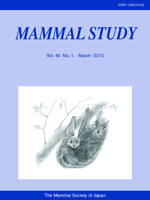The diet composition and feeding habits of the Eurasian otter (Lutra lutra) were studied by post mortem examination of individuals (n = 236) found dead in Hungary in order to test the dietary differences between sample types (stomach and rectum), calculation methods and different factors. A relationship was found between the summarized wet weight (W) and occurrence number (O) of food remains detected in the stomach. Otters preyed primarily on small-sized (< 100 g) cyprinids, mainly on non-commercial fish. The composition of stomach contents differed according to different factors: season — in autumn and winter fish were eaten in higher proportions but in spring and summer there were more amphibians; sex — males prey on fish in higher proportions; age group — juveniles consumed invertebrates in higher proportions; and cause of mortality — otters found dead on roads had consumed fish in higher ratios. The composition of rectum content showed a relationship according to the three calculation methods considered (W, O and B — estimated biomass composition). In the otters examined the composition of food items in the stomach (which is the nearest to the actual food ingested) and the rectum content (which relates to the composition in non-invasive collecting spraints) were basically similar.
How to translate text using browser tools
1 March 2014
Diet and Feeding Habits of the Eurasian Otter (Lutra lutra): Experiences from Post mortem Analysis
József Lanszki,
Éva A. Bauer-Haáz,
Gabriella L. Széles,
Miklós Heltai
ACCESS THE FULL ARTICLE

Mammal Study
Vol. 40 • No. 1
March 2015
Vol. 40 • No. 1
March 2015
food
Lutra lutra
prey size
rectum content
stomach analysis




